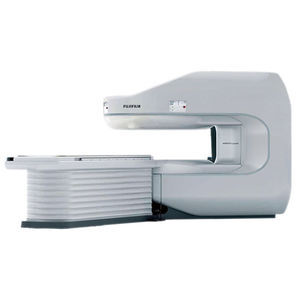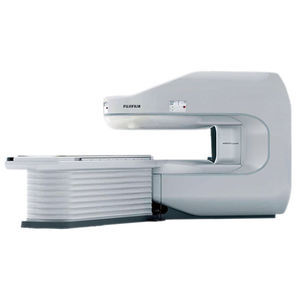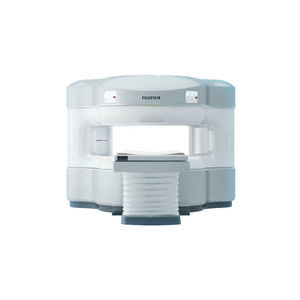
- Medical Imaging
- Radiology
- CT scanner
- FUJIFILM Healthcare

- Products
- Catalogs
- News & Trends
- Exhibitions
CT scanner Supria™ 128for whole-body tomography128-slice
Add to favorites
Compare this product
Characteristics
- Type of system
- CT scanner
- Application
- for whole-body tomography
- Number of slices
- 128-slice
- Ring diameter (cm)
750 mm
(30 in)- Required installation area (m²)
12 m²
(129 ft²)
Description
As medical care advances, CT devices need to be optimized for patient care for accelerating clinical decision-making more than ever.
The rapidly aging population increases the pressure on the economical benefit of medical systems
Supria 128 responds to the paradigm shift in the medical field by applying the latest technologies, such as whole-body submillimeter high-speed imaging and dose reduction technologies, which bring CT to the next level - responding to the various challenging clinical demands.
Iterative processing for routine examinations
Iterative Processing, used for dose reduction, requires plenty of calculation, making it difficult to apply it in routine examinations. In Supria 128, the image processing unit has been renewed and the processing speed improved, facilitating the use of Iterative Processing (Intelli IP) in routine examinations.
Optimal settings for each facility
Noise reduction strength can be selected from 7 levels. We provide high-quality images by reducing image noise and artifacts with an appropriate exposure dose according to the facility's operation policy.
Low tube voltage scanning
In general, low tube voltage scanning can be expected to increase CT values and improve low-contrast resolution with iodine contrast agents.The noise increased by low tube voltage imaging can be reduced by Intelli IP, which also reduces the burden on the patient.
The X-ray detector is separated by a partition. The X-ray utilization efficiency decreases by the thickness of this partition. There is a trade-off between X-ray utilization efficiency and spatial resolution, and the detector is equipped with a minimum slice width of 0.625 mm.
Catalogs
No catalogs are available for this product.
See all of FUJIFILM Healthcare‘s catalogsRelated Searches
- Digital radiography system
- Radiography radiography
- Flat panel sensor
- Multipurpose radiography system
- Radiography system with table
- Radiography system
- Portable flat panel sensor
- Radiography system with floor-standing bucky
- Mobile X-ray unit
- Multipurpose radiography flat panel detector
- Digital mobile radiography unit
- 17 x 17 flat panel detector
- 14 x 17 flat panel detector
- CT scanner
- Mammography system
- Phosphor plate scanner
- Waterproof flat panel sensor
- MRI system
- Veterinary radiography flat panel detector
- Digital mammography unit
*Prices are pre-tax. They exclude delivery charges and customs duties and do not include additional charges for installation or activation options. Prices are indicative only and may vary by country, with changes to the cost of raw materials and exchange rates.








